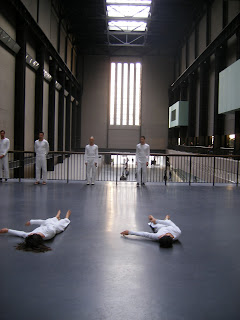To the Soutbank in the evening for the (almost) premiere of a new concerto by James MacMillan written for his friend, Nicholas Daniel the oboist.
One of the main strands of contemporary classical music is the formal minimalism of composers like Reich and Cage. My friend Laurence Crane is part of that tradition, and would point to eg: the sculptures of Donald Judd or the paintings of the abstract expressionists as his inspirations. The other significant strand, to which MacMillan belongs, is a more flowery and colourful world, the extreme edge of which tends towards cacaphonic discordance. Think Harrison Birtwhistle.
Anyway, the MacMillan oboe concerto was a surprisingly rich and lovely piece of music. Full of colour. MacMillan is very religious, and the first time I think we’d come across his music was in Winchester about 15 years ago when we stumbled on a violinist and a pianist rehearsing a haunting, sparse, John Taverner like piece in an otherwise empty cathedral.
MacMillan conducted the concert with vigour, and well deserved the favourable response from the audience.
I met both MacMillan and Nicholas Daniel at a drinks party after the concert. Nicholas was full of excitement about the piece, and explained that it had been incredibly difficult to learn as it was written as a palindrome. Literally. The notes for the oboe part in the third movement were precisely the same as those of the first movement, but reversed in sequence. One really could not have told from listening to it, but it made me slightly revise my allocating MacMillan to the flowery end of contemporary music – it’s a very abstractly formal proposition he’s set out in the score.
As a footnote, the final piece in the concert was Shostakovich’s chamber symphony No 1 Op 110a, which is in fact a rearrangement by Rudolf Barshai of the String Quartet No.8 in C minor Op.110, a piece which will be in a concert I hope to sponsor next year. More on that in due course.....



